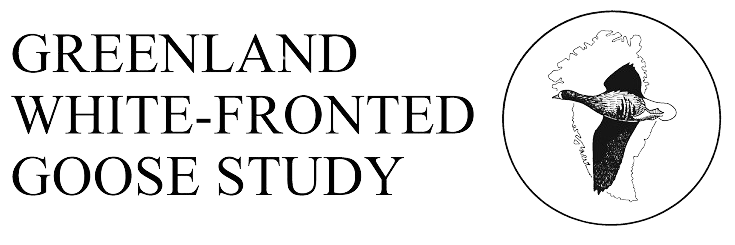History
Probably unknown to Berry (1939), everything suggests that this flock was founded in the winter of 1960/1 when 11 birds wintered at Endrick Mouth on Loch Lomond, increasing to 15 the following winter. R&O (1979) therefore consider A-Ws (1963) account of a maximum count of 35 unlikely at that time. Regular wildfowl counts were a solid basis for tracking the gradual increase in numbers at this resort, which is largely within the National Nature Reserve. Numbers increased slowly to number 138 in 1975, then stabilised at 100-140 birds from the mid 1970s to the mid 1980s, after which numbers increased again, eventually peaking at 450 birds in 2002. In years since 1985 the peak numbers have fluctuated greatly, largely because with increasing number, the birds have spread and in recent years have spent increasing periods of time on farmland well away from Endrick Mouth, making it more difficult to find all the birds and attain an accurate count.
Status
International importance (R&O 56). This is an important flock roosting on a National Nature Reserve and foraging in areas largely free of wildfowling or pressure from other geese, supporting 250-300 geese in recent years. Although difficult to gauge trends in number because of the difficulty of attaining complete coverage, there is suggestion that the numbers may have peaked around 1991 and may be falling back in very recent years. More careful coverage to ensure complete counts may show the flock to be more numerous than we currently suppose, but it seems more likely that there are fewer now than three or four years ago.
Maximum winter counts:
Breeding success: Insufficient age ratios are available from this site to make an informed assessment in changes. It would appear that this flock has always exhibited relatively low production, but annual age ratios in very recent years fail to exceed 10%, suggesting this site has enjoyed low reproductive success similar to elsewhere in the range.
Feeding sites and habitat: The geese feed in the marshes of Loch Lomond, but more frequently range over adjacent farmland, wet and flooded pasture as well as rough rushy grassland within the Reserve.
Roosting sites: The geese roost on Loch Lomond, or on adjacent floodwaters near the mouth of the River Endrick.
Habitat change: None known to affect the geese.
Aircraft disturbance: Not known.
Hunting disturbance: Not known to be a problem here.
Agricultural disturbance: Not likely to be more of a problem than anywhere else in Scotland. It is not clear to what extent such activity could have contributed to declines.
Site safeguard: Endrick Mouth is an NCR SSSI with National Nature Reserve status. Part of the site was designated as a Ramsar Site in 1976 which has been enlarged to accommodate more fully the areas used by the geese. This enlarged area is now within the Loch Lomond SPA and Ramsar site.
SNH Natural Heritage Zones/Area: West Central Belt
Threats: None known
Linkages with other sites: Four marked individuals have appeared amongst the Loch Lomond flock. Two geese ringed in 1979 on the moulting areas in Eqalungmiut Nunaat wintered there, linking another southwest Scottish wintering resort to the southern parts of the breeding range in Greenland, confirming the broader pattern of such leapfrog migration witnessed elsewhere. 1PU was ringed at Wexford, wintered there in 1987/8, was seen on Islay for winters 1988/9- 1992/3 but was not seen for many subsequent years until it was reported from Loch Lomond in winter 2002/3. D2H was also Wexford ringed in 1993/4, last seen there in April 1994. It was seen in Iceland on migration in spring 2001 and 2002, but not seen on the wintering grounds again until 2002/3 when it wintered at Loch Lomond, 2003/4 when it wintered at Stranraer and it was back again at Loch Lomond again in 2004/5.
